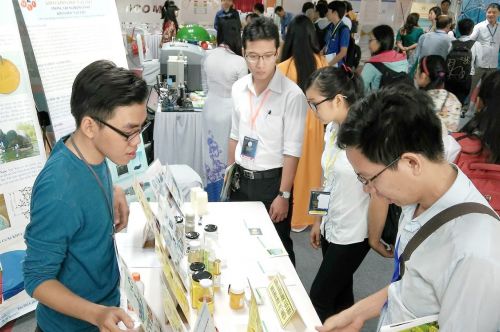What price has Vietnam paid for FDI?
Even skeptics admitted that Vietnam had a successful year in 2015 in attracting FDI with a series of huge projects registered.
Samsung Display Vietnam, which was initially registered with the investment capital of $1 billion in Bac Ninh, has expanded with a new investment rate of $3 billion.
Malaysia’s Janakuasa Sdn Bhd registered a $2.4 billion project on the development of a 1,200 MW thermal power plant in Tra Vinh province.
A huge urban area in HCM City is expected to arise in the future as a $1.2 billion project has been registered under a joint venture between two Vietnamese companies and the British Denver Power Ltd.
According to the Foreign Investment Agency, in 2015, $22.757 billion worth of FDI was registered, an increase of 12.5 percent compared to 2014. Meanwhile, $14.5 billion worth of FDI was disbursed in the year, up by 17.4 percent.
FIEs dominant in the national economy
The increasingly important role played by FIEs in Vietnam has raised worries that the national economy may become reliant on the foreign invested sector.
|
According to the General Statistics Office (GSO), FIEs in 2015 exported $115.1 billion worth of products, or 70.9 percent of Vietnam’s total export turnover. |
According to the General Statistics Office (GSO), FIEs in 2015 exported $115.1 billion worth of products, or 70.9 percent of Vietnam’s total export turnover.
Meanwhile, they imported $97.9 billion worth of products, or 59.2 percent of total import turnover.
In the same year, FIEs had a trade surplus of $17.15 billion.
A survey by Pham Chi Lan, a renowned economist, showed that an increasingly high proportion was contributed by FIEs to the national economy. The figure rose from 13.3 percent in 2000 to 18.1 percent in 2012.
Meanwhile, the proportion has declined for the state-owned economic sector, from 38.5 percent to 32.6 percent.
The private economic sector made up 48.2 percent of the country’s GDP in 2000 and 49.1 percent in 2012.
$9-10 billion flows out every year
IFIEs have been making big contribution to Vietnam’s economic growth in short term. However, in exchange for this, Vietnamese resources are being exhausted.
A research work by Dr Tran Tho Dat and To Trung Thanh from the Hanoi Economics University, shows that the ratio of GNI/GDP (gross national income/gross domestic product) has been decreasing since 2006 from 97.9 percent to 95.1 percent.
Roughly $8.6 billion reportedly went abroad in 2013. The figures were estimated at $9 billion in 2014 and $4.2 billion in the first half of 2015.
Dr Dat said that Vietnam should encourage the development of the private economic sector instead of relying too heavily on FDI.


